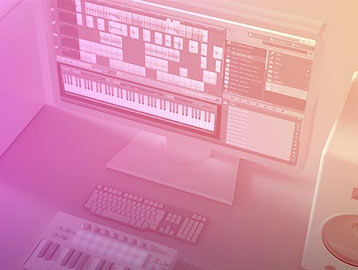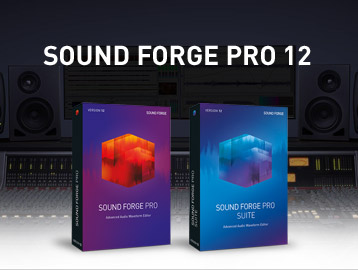NEU
Artist Interview: Jack Steadman

After winning a live slot at the V Festival 10 years ago, North London band Bombay Bicycle Club have gone from strength to strength. In 2009 they released their debut album, with their following three albums all landing in the British top 10 – and their last album climbing to the #1 spot.
Your latest album “So Long, See You Tomorrow“ was recorded and produced in your own studio. What was your studio set-up while the album was being made? And what’s it like now?
When we recorded that album it was the first time I had my own space. I was getting into outboard gear for the first time. Finding my way around a physical mixing desk rather than a digital one. My new studio is much smaller but much more crowded. Half of the room is just LPs. It’s very cosy.
What advantages does production in a home studio have in comparison to a studio you have to rent?
I think workflow is so important for your creativity, and in a home studio you get to perfect your workflow and it’s 100% tailor-made for you. The only trouble is that one day it can feel monotonous and uninspiring. You have to constantly redecorate!
Why did you choose Samplitude?
I’ve been using Magix Music Maker since I was 15 years old. It’s been incredible to have a program upgrade itself while I am also learning more and more.
For what part of the production did you work with Samplitude? Which functions did you use the most?
I use Samplitude for all tracking and mixing, and most of the writing too! I’ll use something else if I need to be super loop-based. I love Samplitude’s object-based processing, and the cut feature with automatic fades. I do so much cutting and slicing when I’m writing and recording. I can be really creative with cutting something up and editing each slice separately.
Many of our users would see you as an inspiring role model. Do you have any tips for them? What were the biggest challenges for you?
The biggest challenge is finding new inspiration. My advice is to go crate-digging. And go hunting for free VST instruments, especially unique ones. I always write a new song immediately after trying something new like that.
https://soundcloud.com/bombay-bicycle-club/luna
What is your favourite record store in London?
Cosmos Records on Hackney Road. Super friendly. Great jazz, funk, Japanese jazz, library music. I’ve found many samples there.
Where is the craziest place that you’ve ever found your own album or heard your own music?
When I first saw our album on a British Airways entertainment system I was pretty blown away. It was probably the altitude as well though (laughing).
What roots do you have as listeners and musicians? Which artists inspire you the most?
My biggest inspirations are Joni Mitchell, John Coltrane and Jon Hopkins.
Your last albums contain two samples of Lata Mangeshkar from India. Why did you pick those samples and where did you find her record?
I was renting a studio in Mumbai and went to a flea market one day. There were such rich textures on those old Hindi film songs, not to mention these incredibly immediate melodies.
“Flaws“, your acoustic album, differs a lot from the sound of your latest album. It seems like you really like to experiment with your sound. But at the end of the day, would you say you’re more analog or digital musicians?
I’d like to say I’m comfortable being both.
For your last album you asked your sound engineer and mixer Mark Rankin to create a sound between Queens of the Stone Age and AlunaGeorge. In your opinion, is it more QotSA or more Aluna?
It’s probably more Aluna, but we have our roots in QotSA so in that sense Mark Rankin was perfect. He could record great guitar sounds but also get a perfect 808 or sub bass sound too.
After holistic changes of your sound over previous albums, do you think you have found a style in “So Long, See You Tomorrow” that you will stick with in the future?
I’m not sure that we will ever find a sound and stick to it.
You once said: “We would have picked a better name [for our band] if we knew that it was going to last for longer than a couple of years.” What name would that have been?
The Jukes Quartet.

More info:
Official homepage
Facebook
< Previous Post
Artist Interview: Cyril Picard
Related Posts
The new sound of Music Maker hits the 2 million installs mark!
The new Music Maker gets a new audio engine. All information about the new engine and other intuitive functions you can find here.
Brand new: SOUND FORGE Pro 12
Learn about the new features, improvements and highlights in the latest version of the sophisticated audio editor SOUND FORGE Pro.
Artist Interview: Heba Kadry
Heba Kadry shares her experience as mastering engineer in the New Yorker Timeless Mastering Studio
Artist Interview – Trap producer Simtem
The Canadian producer Simtem about Trap talked with us about the music business and the Music Maker.



